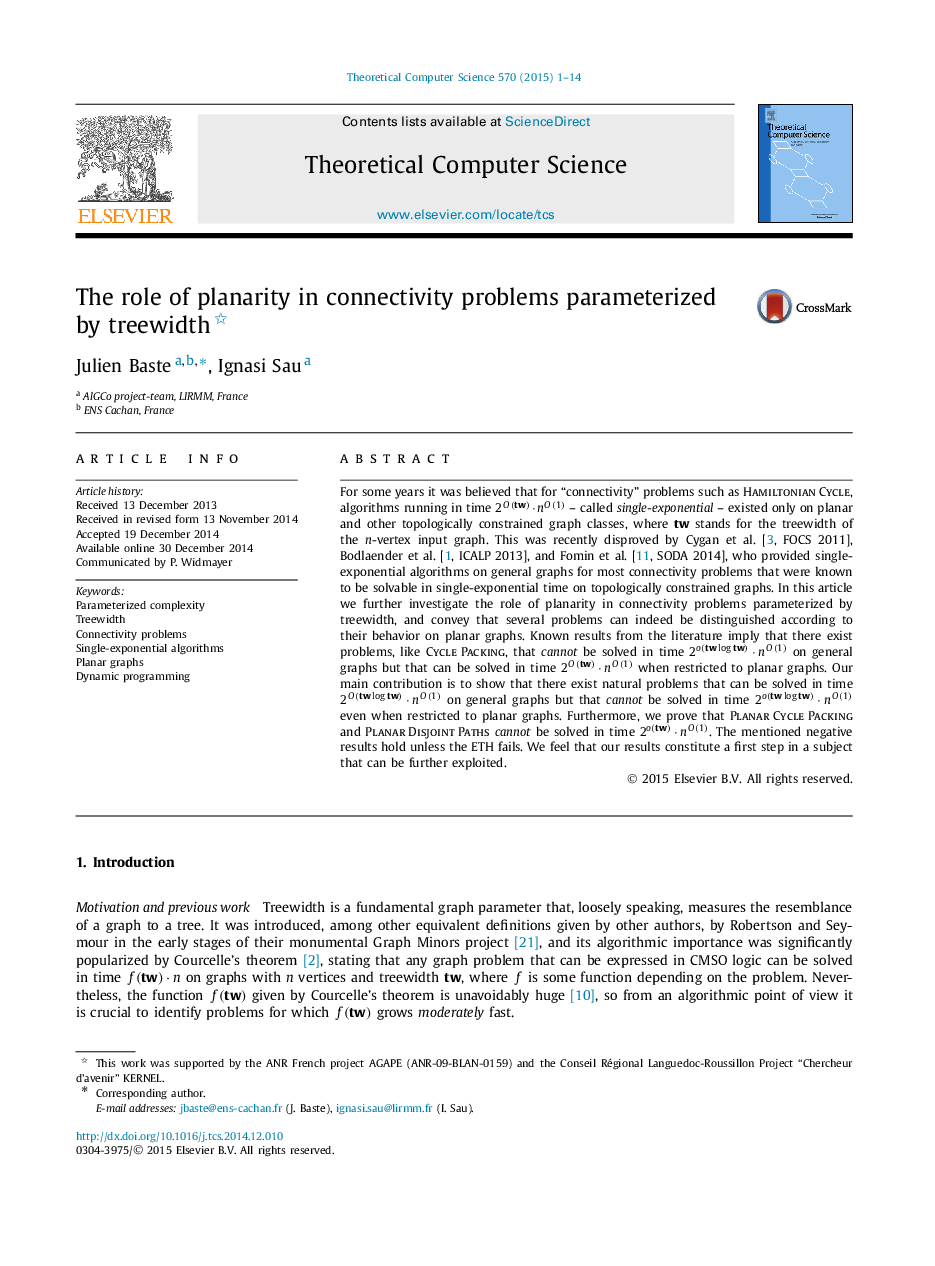| کد مقاله | کد نشریه | سال انتشار | مقاله انگلیسی | نسخه تمام متن |
|---|---|---|---|---|
| 437923 | 690209 | 2015 | 14 صفحه PDF | دانلود رایگان |

For some years it was believed that for “connectivity” problems such as Hamiltonian Cycle, algorithms running in time 2O(tw)⋅nO(1)2O(tw)⋅nO(1) – called single-exponential – existed only on planar and other topologically constrained graph classes, where tw stands for the treewidth of the n-vertex input graph. This was recently disproved by Cygan et al. [ 3, FOCS 2011], Bodlaender et al. [1, ICALP 2013], and Fomin et al. [11, SODA 2014], who provided single-exponential algorithms on general graphs for most connectivity problems that were known to be solvable in single-exponential time on topologically constrained graphs. In this article we further investigate the role of planarity in connectivity problems parameterized by treewidth, and convey that several problems can indeed be distinguished according to their behavior on planar graphs. Known results from the literature imply that there exist problems, like Cycle Packing, that cannot be solved in time 2o(twlogtw)⋅nO(1)2o(twlogtw)⋅nO(1) on general graphs but that can be solved in time 2O(tw)⋅nO(1)2O(tw)⋅nO(1) when restricted to planar graphs. Our main contribution is to show that there exist natural problems that can be solved in time 2O(twlogtw)⋅nO(1)2O(twlogtw)⋅nO(1) on general graphs but that cannot be solved in time 2o(twlogtw)⋅nO(1)2o(twlogtw)⋅nO(1) even when restricted to planar graphs. Furthermore, we prove that Planar Cycle Packing and Planar Disjoint Pathscannot be solved in time 2o(tw)⋅nO(1)2o(tw)⋅nO(1). The mentioned negative results hold unless the ETH fails. We feel that our results constitute a first step in a subject that can be further exploited.
Journal: Theoretical Computer Science - Volume 570, 9 March 2015, Pages 1–14